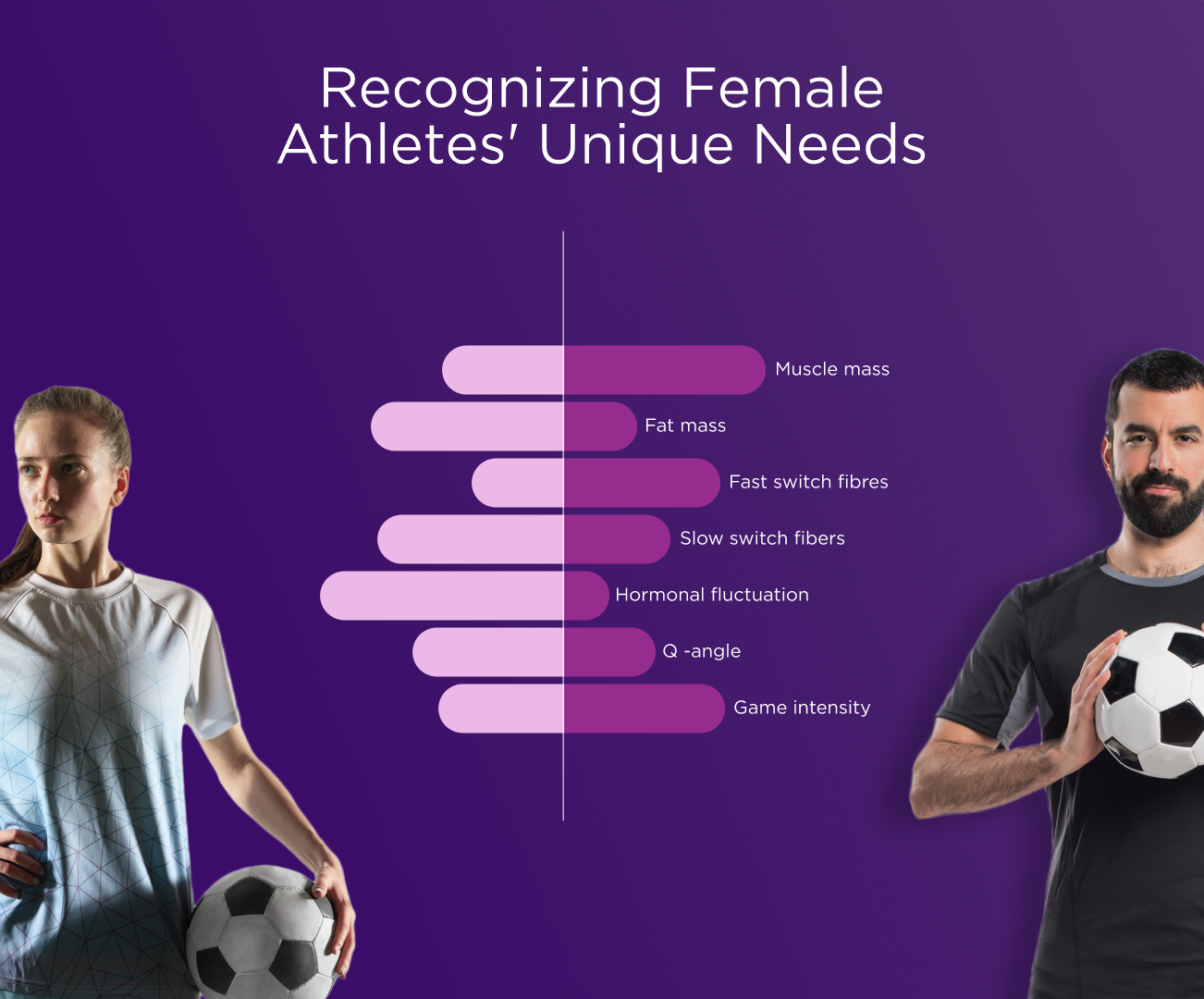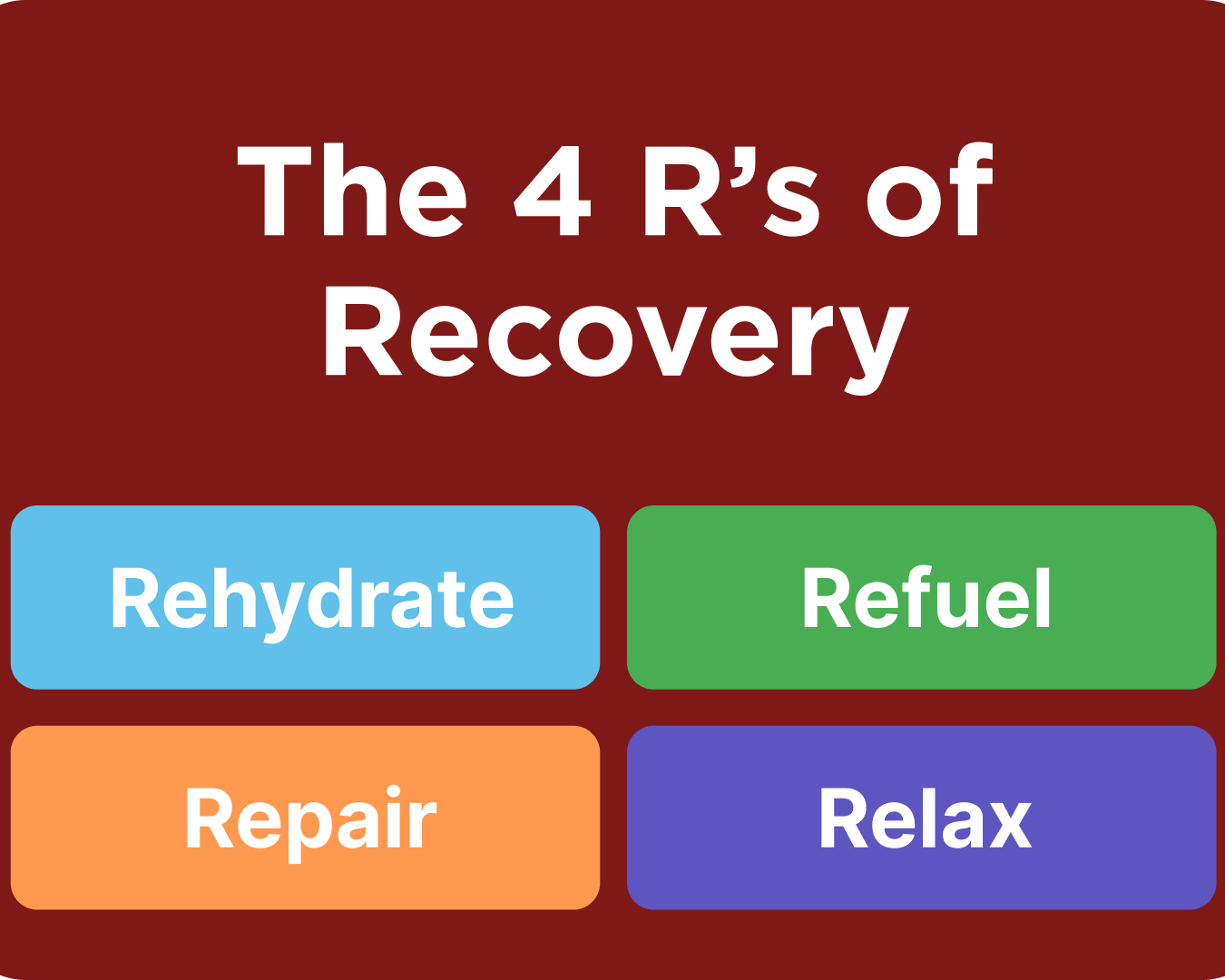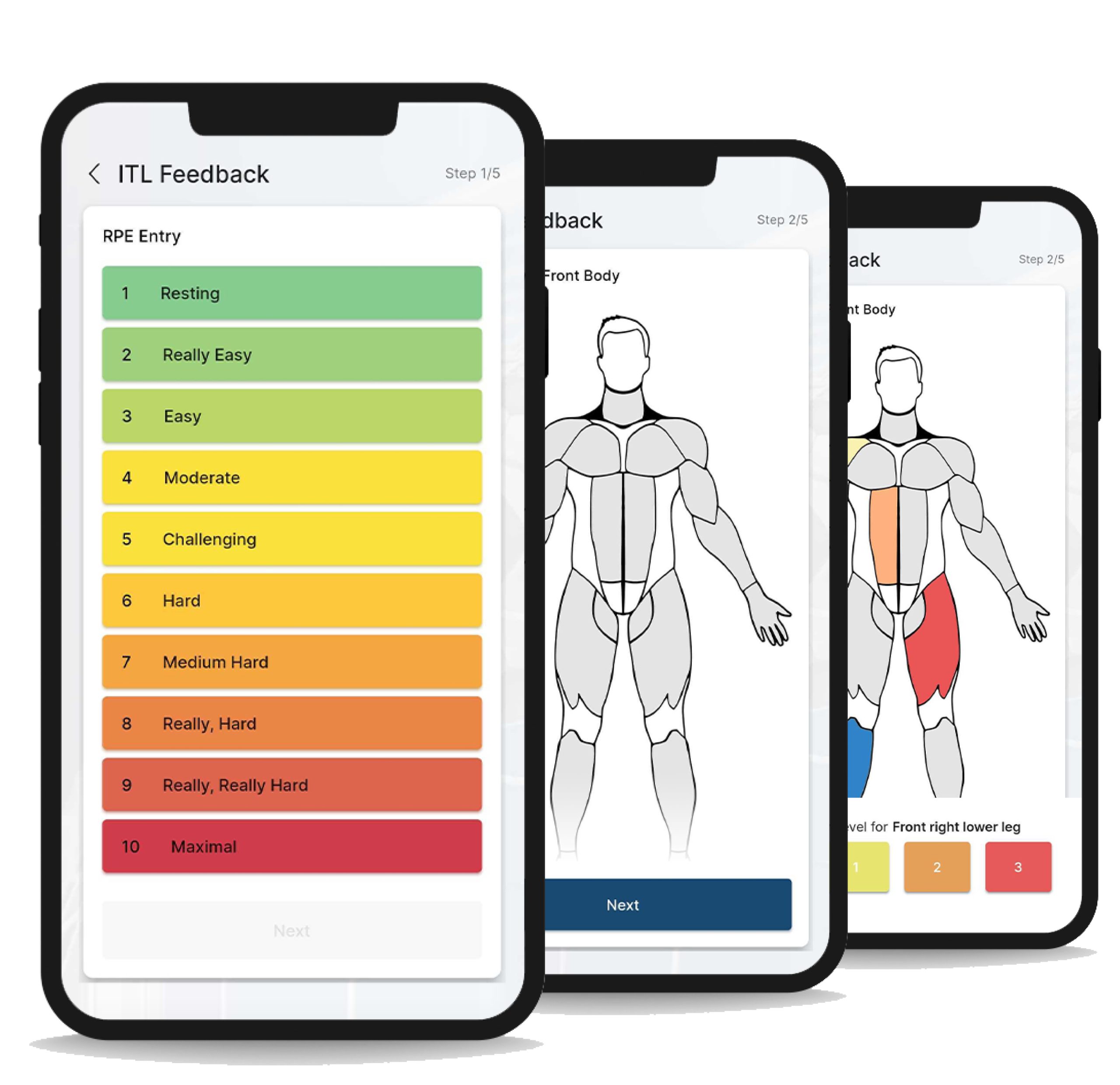It might seem hard to believe, but right now, approximately 300 million women across the planet are experiencing the same thing: a period. The monthly menstrual cycle is a reality that most women on Earth will go through in their lives.
Periods typically last anywhere between two and seven days and occur once within a 28-day cycle. This cycle repeats approximately 450 times during a woman’s life. Behind the scenes are a series of hormonal controls that fine-tune the body’s internal workings to initiate or halt menstruation during those 28 days.
Female Athletes and the Menstrual Cycle
Female athletes constantly push their bodies to achieve peak performance in their respective sports. However, one factor that is often overlooked but can significantly impact their performance is the menstrual cycle. As mentioned before, the menstrual cycle is a complex process involving hormonal fluctuations, which can affect various physiological and psychological aspects of our bodies. Therefore, to understand menstrual periodization, we must understand these hormones.
Let’s Talk About Hormones!
Estrogen is commonly vilified as the hormone that makes you fat and frail, a reputation based largely on the results of male steroid users. Yet this reputation of estrogen couldn’t be more undeserved for women. Estrogen is anti-catabolic and aids in muscle repair.
Unfortunately, there is a hormone that does many of the things estrogen is accused of, and that is progesterone. Ironically, progesterone’s catabolic effects seem to be partly the result of counteracting estrogen’s positive effects. For example, estrogen promotes glucose uptake in type I muscle fibers and prevents protein catabolism. Progesterone cancels out both of these positive effects. Progesterone also seems to inhibit the female motor cortex, reducing the brain’s ability to recruit muscles. Worst of all perhaps, progesterone can act as a testosterone antagonist, blocking testosterone from exerting its anabolic effects.
In short, estrogen seems to be beneficial for muscle growth, whereas progesterone seems to be bad news. The ratio between estrogen and progesterone thus influences the results of female training sessions.
Hormonal Changes During the Menstrual Cycle
Estrogen and progesterone concentrations fluctuate strongly during the menstrual cycle. From the start of menstrual bleeding to ovulation – the follicular phase – estrogen levels tend to be higher than progesterone levels. From ovulation to the start of the next menstruation – the luteal phase – progesterone levels tend to be higher than estrogen levels.

Testosterone levels also tend to be higher during the follicular phase than the luteal phase, though the variation isn’t nearly as large as for estrogen and progesterone.
Based on these differences in hormone levels, we would expect training to be more effective for muscle growth during the follicular phase.
The Impact of the Menstrual Cycle on Female Athletes’ Performance
Research conducted in elite female soccer players found that over 87% of players perceived reduced power and increased fatigue during menstruation, while over 66% perceived their reaction time and recovery to be affected. Considering the approximate maximum career length of soccer players (21 years) and a woman’s fertile life, that adds up to about 250 times throughout a woman’s soccer career that performance may be compromised. Trends observed among female soccer players closely mirror the experiences of other female athletes, with over 74% reporting negative effects mainly during the first days of menstruation. For some, this may lead to reduced training participation, potentially compromising skill development, fitness levels, and even their chances of being selected for competition.
How to Support Athletic Performance at All Cycle Stages
It’s essential for players to familiarize themselves with their own cycles to understand how they’re affected throughout and communicate any menstrual cycle-related issues to support staff (physicians and coaches). This awareness can guide adjustments in training and nutrition when required. For example, estrogen has an important influence on iron levels in females; chronic estrogen deficiency is linked to iron deficiency. Iron status can also be compromised by blood loss during menstruation, depending on the heaviness and duration of bleeding.
Iron is essential for human function, facilitating energy production and the transportation of oxygen around the body. In soccer, about 60% of elite female players present as iron deficient, compared to less than 12% of their male counterparts. For an iron-deficient midfielder, this might translate into covering less distance at lower speeds.
Therefore, it’s important for female athletes to have their iron levels regularly checked by qualified practitioners. Addressing deficiencies through diet, supplementation, or iron transfusions will ensure athletic performance during training and competition is not compromised.
Individual athletes’ training loads can also be strategically managed to accommodate severe menstrual symptoms.
The Four Main Phases of the Menstrual Cycle
The menstrual cycle consists of four main phases: menstruation, follicular phase, ovulation, and luteal phase. Each phase is characterized by specific hormonal changes that can influence an athlete’s performance in different ways.
- Menstruation: During menstruation, estrogen and progesterone levels are at their lowest. Some athletes may experience symptoms such as pain, cramps, weakness, fatigue, mood swings, poor sleep, and focus, challenging performance during training and competition. Prioritize rest and recovery to allow your athletes to recover from the physical demands of training and competition. Engage them in low-intensity activities such as light jogging, stretching, or yoga to maintain movement without overexerting athletes.
- Follicular Phase: As estrogen levels begin to rise during the follicular phase, many athletes may experience an increase in energy levels and strength. According to some studies, in the Follicular Phase “low hormone,” the training focus is recommended to be on strength/power training (low repetitions and high weights) and high-intensity endurance and speed training.
- Ovulation: Ovulation occurs around the middle of the menstrual cycle when estrogen levels are at their peak. Some athletes may experience a surge in energy and performance during this phase, while others may feel more prone to injury due to increased laxity in the joints. Ensure your athletes are getting adequate rest and recovery between training sessions to support muscle recovery and performance.
- Luteal Phase: The luteal phase is characterized by a rise in progesterone levels, which can lead to symptoms such as bloating, fatigue, and decreased motivation. During the Luteal Phase “high hormone,” the recommendation is on less cardiovascular intensive work, functionality, technique, and endurance maintenance.

What About Team Sports?
Football clubs around the world have been experimenting with this strategy since it gained popularity during the 2019 Women’s FIFA World Cup. But how does it look in practice?
For team sport athletes, such as soccer players, this can be a demanding logistical task. It’s not easy to track the menstrual cycles of more than 25 players concurrently and hold training sessions at convenient times for all of them. The complexities are heightened when training and game days cannot be avoided.
However, performance coaches must consider athletes’ needs and ensure they’re prepared for competition while minimizing the risk of injury and menstrual discomfort.
Chelsea Made It!
For example, Chelsea became the first club to tailor training to menstrual cycles. How did they do it?
The initiative has been driven by manager Emma Hayes, who felt that for too long female footballers had been treated as physically the same as their male counterparts and that specific allowances needed to be made for the impact of menstruation on performance. “It is fair to say, I am a female coach in an industry where women have always been treated like small men,” she said. “The application of anything from rehab to strength and conditioning to tactical all come from the basis of what men do.
“The starting point is that we are women and, ultimately, we go through something very different to men on a monthly basis. And we have to have a better understanding of that because our education failed us at school; we didn’t get taught about our reproduction systems. It comes from a place of wanting to know more about ourselves and understanding how we can improve our performance.”Emma Hayes, Head Coach of Chelsea Women
So they have encouraged players to download the FitrWoman app. The app allows women to input information about their menstrual health and related symptoms, which can then be logged and monitored, and with the consent of the players, Chelsea’s coaches access this information and tailor their training programs.
In the Croatian women’s national football team, we are using the Ultrax app, which allows us to track and monitor the menstrual cycles of our players. It gives us information about their hormonal levels and recommendations on what we should pay attention to in training and recovery depending on which menstrual phases each of them is in.

How I Do It
Every athlete is different, so it’s impossible to come up with a “one plan fits all” approach.
But after collecting information about my female athlete and knowing which phase she is in, along with understanding her symptoms, it’s time to adapt individual work.
Here’s just one example:
During menstruation, when energy levels may be lower, I focus on low-impact activities such as light cardio, breathing exercises, pelvic muscle relaxation, mobility, stability, and short isometric exercises. For example: a warm-up on the bicycle, pelvic muscle relaxation, a whole-body mobility session, variations of dead bugs, single-leg glute bridges, bird dogs, single-leg balance, wall sits, iso lunges, etc. Then, I would end with light jogging, breathing exercises, and stretching.
As the follicular phase begins, I start increasing the intensity and volume of workouts to improve endurance, including longer isometric contractions, and gradually introduce weights.
Ovulation is the peak of the menstrual cycle, so I focus on gym sessions working on eccentric and concentric contractions with heavy weights. Also, in this phase, I work on developing speed and power.
Finally, during the luteal phase, I prioritize recovery and incorporate exercises similar to those mentioned in the first phase – menstruation. It depends on the symptoms that the athlete experiences during her PMS.
As you can see, one menstrual cycle can be similar to a microcycle with one game in a week. It appears as if we start with recuperation, then work on endurance, strength, power, and speed before it’s time for the next match.
Let’s not get confused; I wrote this example for individual work that is in addition to team training. Let’s not forget that coordinating teamwork considering the different menstrual cycles of 25 or more players can be challenging.
To Summarize:
So I want to mention once again, every athlete is different, but developing individual player performance ensures you’ll always do your best. Sports data analytics and dashboard planners make it possible to look for potential overload risks and other tendencies that could impact sports performance.
- The menstrual cycle has a life cycle that can and should be tracked.
- Each phase of the cycle has a main need, main change, and main impact on sports performance that, if properly addressed, can enhance athletes’ performance.
- Tracking and open communication will bring tremendous benefits for the athlete’s health and performance.
- Strength training programs for women can be tailored to each athlete’s menstrual cycle, and coaches should take hormonal fluctuations into account.
- Creating and implementing a training plan around the menstrual cycle can be challenging and taxing for the coach, but it will potentiate and optimize their female athlete’s performance.
References
- Carmichael, M.A., Thomson, R.L., Moran, L.J., & Wycherley, T.P. (2021). The Impact of Menstrual Cycle Phase on Athletes’ Performance: A Narrative Review. International Journal of Environmental Research and Public Health, 18(4), 1667. DOI: 10.3390/ijerph18041667. PMID: 33572406; PMCID: PMC7916245.
- Sung, E., Han, A., Hinrichs, T., Vorgerd, M., Manchado, C., & Platen, P. (2014). Effects of follicular versus luteal phase-based strength training in young women. Springerplus, 3, 668. doi: 10.1186/2193-1801-3-668. PMID: 25485203; PMCID: PMC4236309.
- Julian, R., Hecksteden, A., Fullagar, H.H., & Meyer, T. (2017). The effects of menstrual cycle phase on physical performance in female soccer players. PLoS One, 12(3), e0173951. doi: 10.1371/journal.pone.0173951. PMID: 28288203; PMCID: PMC5348024.
- Sims, S. Roar by Stacy Sims Author of “Women Are Not Small Men”. Retrieved from https://www.drstacysims.com/
- Fernandes, B. Sports and Menstrual Cycle 101.






